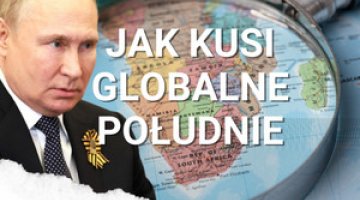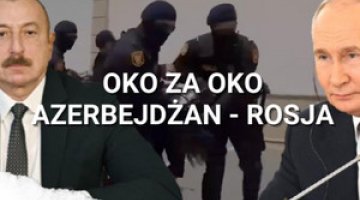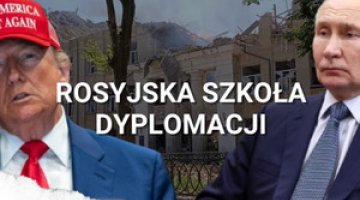Ukraine consolidates in Kharkiv Oblast. War after 204 days

Ukrainian forces have entered more villages in the recovered areas – Velyki Prokhody and Mali Prokhody north of Kharkiv. Deputy Defence Minister Hanna Malar reported that as of 6 September, an area of nearly 8,500 square kilometres in the Kharkiv Oblast with 388 villages and 150,000 inhabitants had been liberated. According to the head of the local administration Oleh Synyehubov, 6% of Kharkiv Oblast remained under enemy control, while by the start of the counter-offensive, the occupiers had occupied 32%. Prime Minister Denys Shmyhal announced that after the Russians had been driven out, the construction of fortification facilities had begun to make it difficult for the enemy to attempt to retake the lost territory. Commenting on the results of the counter-offensive, Secretary of the National Security and Defence Council of Ukraine Oleksiy Danilov said that the ratio of losses was 1 to 9–10, to the disadvantage of the Russian troops.
Fighting continues in the Donetsk Oblast, with Ukrainian forces repelling enemy attacks on Bakhmut from the east, in localities south, southeast, and northeast of the city, as well as in the Donetsk area – north and southwest of Donetsk – and southeast of Siversk. After weeks of clashes, the defenders most likely retreated from Maiors’k north of Horlivka. Russian assaults on Ivanivka in the north of the Kherson Oblast and Ukrainian efforts to seize Kyselivka northwest of Kherson failed. According to reports from the occupied areas, the Ukrainians were to attempt a landing on the occupied Kinburn Spit on the border of the Kherson and Mykolaiv oblasts. The Russians are to reinforce the first line of defense in the Donetsk and Zaporizhzhia oblasts with units of the 3rd Army Corps and part of the forces withdrawn from the Kharkiv direction.
The aggressor continued to shell and bombard Ukrainian army positions and facilities along the entire contact line. Russian forces significantly increased the number of rocket artillery attacks, with 86 to be carried out on 14 September and 96 the day after. After a one-night pause, the invaders resumed their shelling of Kharkiv and hit Vovchansk and Zolochiv to the north. The Russian artillery and air force also attacked Kryvyi Rih, Nikopol, and towns in the south-western part of the Dnipropetrovsk Oblast, near Mykolaiv and southeast of Zaporizhzhia, including its suburbs. On the other hand, the defenders’ artillery and aviation mainly attacked enemy positions and facilities in the Kherson Oblast, including the ferry crossing at Kherson. There were also explosions in the area of Russian military facilities in Melitopol.
Using ballistic missiles and cruise missiles (eight on 14 September and eleven a day later), the invaders struck, among other things, the Karachunivskyi Reservoir dam on the Dnieper–Inhulets canal in the Kryvyi Rih region – as a result of the attack, the water level in the latter river rose twice, causing local flooding. Russians also hit the industrial infrastructure in that city and Zaporizhzhia. Defenders were said to have shot down enemy missiles over the Kirovohrad and Odesa oblasts. President Volodymyr Zelensky reported that the Russians had fired more than 3,800 missiles at the country by 15 September.
As part of Operation INTERFLEX, organised in the UK with the participation of the Netherlands, Canada, New Zealand, and Ukraine, 5,000 Ukrainian soldiers have so far been trained. By the end of this year, at least 500 local military specialists are to be prepared by Lithuania, which has also refurbished PzH 2000 self-propelled howitzers received by Ukraine from Germany. Germany has handed over a further four Gepard self-propelled anti-aircraft guns (a total of 24 vehicles of this type have already been delivered to Ukraine out of the 30 promised, at least one has been destroyed). Berlin has also announced the handover of a further two MARS multiple rocket launchers (it had previously handed over three) and 50 Dingo armoured cars. The new package of US military support, worth about $600 million, is to include, among other things, missiles for the HIMARS launchers, 1,000 rounds of 155mm calibre precision artillery ammunition, 36,000 rounds of 105mm artillery ammunition and four counter-battery radars.
In the liberated territory of the Kharkiv Oblast, 23 investigative groups supervised by the Ukrainian prosecutor’s office have begun their activities. Their task will be to collect materials on war crimes committed by aggressor forces. Zelensky announced that mass graves of murdered residents had been discovered in the recaptured Izyum (the regional police had reported the discovery of 440 corpses). All the bodies will be exhumed to indicate the causes of death. The President stated that in Izyum and Balakliia, the Russians behaved similarly to the Kyiv Oblast: they tortured residents and destroyed kindergartens, schools, and residential infrastructure. He stressed that the world should learn the truth about the consequences of the Russian occupation and called for the perpetrators to be held criminally responsible.
An SBU counter-intelligence operation is underway in the Kharkiv Oblast. It aims to detect and detain collaborators. By 15 September, SBU charged 16 collaborators of the occupation forces and are verifying the data of 7,000 people suspected of favouring the Russians. As part of operational activities, SBU obtained the occupation tax service records. Based on these, they received data on commercial structures contributing taxes to the Russian budget, which is considered in Ukraine as supporting aggression.
An anti-diversion operation is underway in the remaining aggressor-held territories of Ukraine. The Russian National Guard reported the arrest of more than 130 suspected collaborators with Ukrainian special services and the military in the Kherson and Zaporizhzhia oblasts, as well as the disclosure of ten caches of weapons and ammunition. In Kherson, Russian services, aiming to detect individuals supporting enemy forces, go as far as a provocation – they create fictitious social network accounts offering assistance to one of the Ukrainian army brigades. They then target individuals willing to provide support, intending to arrest them.
According to information obtained by the Ukrainian special services, preparations for the so-called annexation referendum in the Kherson Oblast have been cancelled. Documentation collected by the occupying forces to help conduct the vote was taken to Russian-controlled areas on the left side of the Dnieper.
The Ukrainian Prime Minister admitted that a Cabinet of Ministers' official in charge of a cell compiling confidential material was sentenced to 12 years in prison at the end of August for cooperation with Russian special services. Even before his detention, the SBU had used him for some time to provide false information. The convict worked for the Russians for 15 years, recruiting other officials to cooperate with him during this time.
On 15 September, European Commission President Ursula von der Leyen visited Kyiv for the third time since the invasion. She met with President Zelensky and Prime Minister Shmyhal. The talks concerned, among other issues, Ukraine’s integration into the EU internal market, customs cooperation, increasing Ukrainian electricity exports to the Union, and the country’s post-war reconstruction, to be discussed at the Reconstruction Congress in Berlin on 25 October. Von der Leyen also announced that Brussels would provide €100 million to Ukraine to reconstruct 74 schools destroyed by the war. At a joint press conference with President Zelensky, she said that the accession process was “on track” and noted Ukrainian progress.
According to a report by the International Monetary Fund, more than 12 million people have left Ukraine since 24 February, of whom 7 million have been granted temporary protection status in EU countries. Poland (1.35 million people) and Germany (970,000) have issued the most decisions to grant such status, while the Czech Republic (Ukrainians who have received asylum represent 4% of the population), Estonia (3.9%), Poland (3.6%) and Moldova (3.5%) have granted asylum per country’s population. Poland has issued 1.35 million residence permits to refugees from Ukraine, the Czech Republic over 423,000, Italy almost 154,000 and Spain 139,000. According to the report, 90% of refugees are women with children, and children alone (depending on the country) account for between 22 and 44%. According to IMF data, by the end of April this year. The European Commission had disbursed €3.5 billion to member states to cover expenses related to the deployment of refugees. Among the primary recipients of these funds are Poland (€562 million), Italy (€452 million), and Romania (€450 million).
According to the KMIS poll, 87% of Ukrainians oppose any territorial concessions to Russia (up three p.p. since July), while 8% believe that some territories could be given up to ensure peace and preserve independence (down two p.p. since July). Even among those living in eastern Ukraine, which is subject to the heaviest fighting, 85% are against territorial concessions (10% allow them), while in the south of the country, 83% are against them (10% also allow them). Among respondents living before 24 February in regions that have subsequently been occupied (these people have left for Ukrainian-controlled areas), only 2% allow territorial concessions, and 92% do not. Nationwide the share of those opposing any territorial concessions is 85% among Russian-speaking Ukrainians (10% are in favour), 90% among Ukrainian-speaking citizens (6% are in favour), and 89% of bilinguals (6% are in favour).
Commentary
- Kyiv’s offensive in the Kharkiv Oblast has died down. However, information from the Kherson Oblast indicates that the Ukrainians are not ceasing active operations, especially towards the regional capital. Under attack, so far without success, is Kyselivka, located 20 km northwest of Kherson, which can be accessed via the M14 motorway. The seizure of this village will mean that the defenders will move out to the outskirts of the regional capital. The Russians’ seriousness about the threat posed by the possibility of breaching their defenses in the Kherson Oblast is evidenced by the attack on the Karachunivskyi Reservoir dam near Kryvyi Rih. The first line of Russian defenses runs along the Inhulets River, and the low water level has made it easy for Ukrainian units to cross and attack enemy positions. After the dam was breached, resulting in its raising, attacks became more difficult.
- The discovery of the mass grave in Izyum puts Russia’s responsibility for war crimes in Ukraine on the agenda once again. The authorities in Kyiv will seek to initiate an international criminal trial to identify those responsible for the murder of civilians. The titular ambassador Anton Korynevych is in charge of this task, his mission being to convince Western countries to set up a special tribunal to try the Russian authorities. On 16 September the Council of Europe declared readiness to discuss the possibility of setting up such a body, which should be seen as Kyiv's success. Ukraine’ argues that the establishment of an international tribunal should be the result of an agreement by states willing to provide a legal assessment of Russia’s actions.
- After almost seven months of the war – despite fatigue, impoverishment and the prospects of a difficult winter – the Ukrainian people’s inflexibility towards Russian demands is only strengthening. The results of a poll conducted just after the counter-offensive in the Kharkiv Oblast show that every successful action by the Ukrainian army raises public morale, fuels hopes for final victory, and strengthens the will to make economic and livelihood sacrifices. The unwavering unity in these attitudes, uniting Ukrainian- and Russian-speaking citizens across the country, is also telling. This reinforces the determination of the Ukrainian authorities and army to continue the struggle and reject the conditions imposed by Russia.





